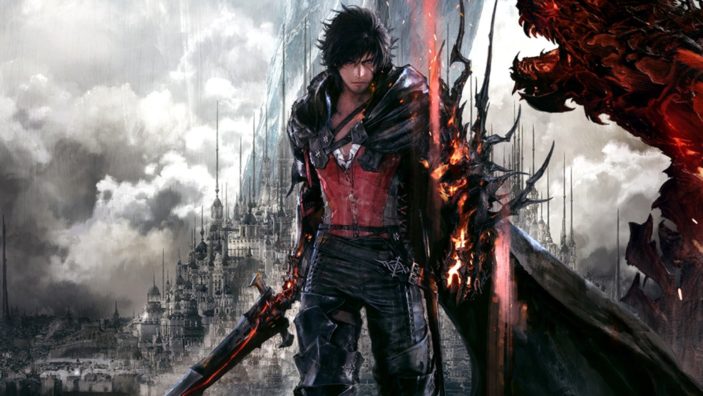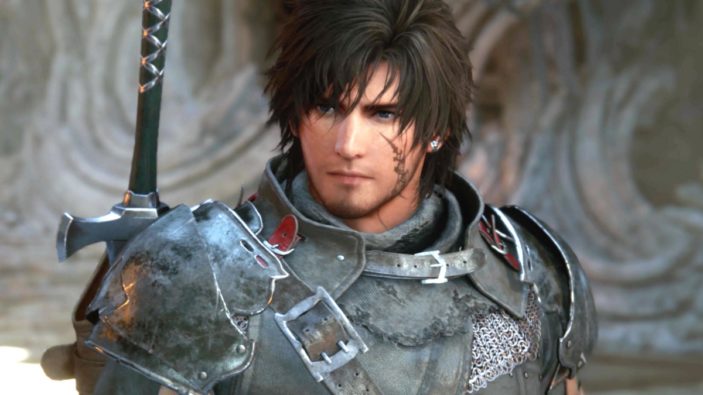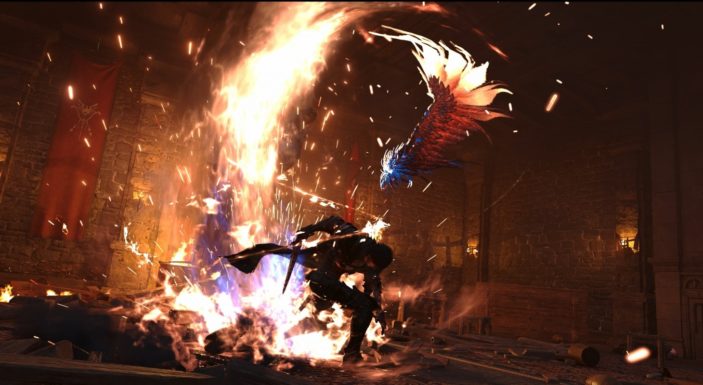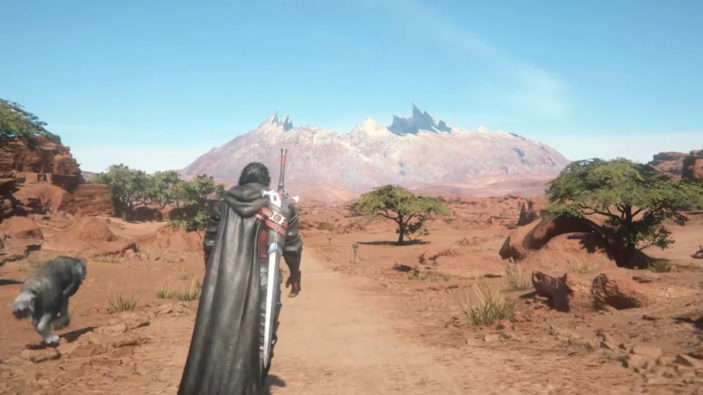
For a franchise that has existed as long as Final Fantasy has, it’s amazing to see how it’s still evolving into what we now know to be Final Fantasy XVI (16). While it’s not the sixteenth game overall, the sixteenth mainline entry brings forth a new story, fresh characters and one incredibly revamped combat system. For those relatively unfamiliar or disinterested in the franchise, Final Fantasy 16 makes every attempt to remain accessible, epic, nuanced and downright entertaining for anyone willing to dive in.
While the engaging story and new combat system are worth the price of admission alone, there are indeed deviations the franchise takes that need a little tweaking, as previous entries have admittedly done things like exploration a little better than what we get here. But for as many risks as this entry takes, it’s hard to complain for too long when everything else works as well as it does.
I Am Just an Eikon Living
Final Fantasy 16’s story puts players in the shoes of protagonist Clive Rosfield, a prince of the kingdom of Rosaria. He also serves as a dedicated protector of his younger brother Joshua, who is otherwise referred to as the Dominant of Phoenix. For context, there are those in this particular world who are born with immense power and referred to as either Dominants or Eikons. While Eikons themselves serve as incredibly powerful otherworldly beings, Dominants are humans who can utilise and tap into the powers that these Eikons offer, even going as far at certain points to transform into them.
The game begins with a rather breakneck introduction to Clive and the Rosfield legacy while touching on surrounding lore that involves the warring of five kingdoms. There’s a bunch of knowledge to unpack, but it’s worth noting upfront that Clive is an engaging protagonist, whose driving motivations keep us invested in his journey, which takes place over three distinct eras of his life. While I would rather leave most of the story for players to enjoy, there’s no shortage of emotional, tense, humorous and heartwarming moments, thanks to some fantastic voice acting from Clive’s English voice actor Ben Starr.

Clive isn’t alone, however, and thanks to some impressive performances from the supporting cast, these characters also stick out, leaving memorable impressions along the way. While I’m sure that Clive’s childhood friend Jill and charismatic mercenary Cid will serve as fan favourites (Cid might be one of my favourite Final Fantasy characters), the story whizzes along at breakneck speeds, thanks to a balanced blend of cutscenes and gameplay. The cutscenes can prove a little long and frequent at times, but it only feels balanced as a hefty amount of lore and character progression is loaded into these moments.
While there can be a lot to follow, Final Fantasy 16 allows users to tap into a feature called Active Time Lore. At any point during a cutscene, players can hold down the DualSense controller touchpad to read into the current conversations and featured characters. if you’ve ever used Amazon’s Prime Video streaming service, then you might have seen actor names pop up along the bottom of the screen when you pause your content. While I don’t think the core narrative is necessarily confusing, it’s a great way to keep up with key terms and background information which constantly catches you up to speed before you feel like you’re falling too far behind. While similar mechanics has previously been featured in lore-heavy games like Pentiment, I do hope this carries over to other titles and genres. But through it all, Final Fantasy 16’s story is incredibly cinematic, from the well-acted scenes to epic Eikon battles, which we’ll touch on a bit later.
A Drastic Departure
For all that Final Fantasy has done for JRPG titles in the past, you would think that FF16 would sit tight and play things safe. Forget that. FF16 brings with it a brand new combat system that throws most JRPG roots and mechanics out the window, in favour of a more traditional thrid-person hack-and-slash romp. Clive has access to a dedicated melee attack confined to the square button, a ranged Eikon-based magical attack confined to the triangle button, and three interchangeable magical abilities that can be assigned to the circle button and a combination of R2 and either attack buttons.
It’s an incredibly smooth and responsive system that prides itself on timing and creativity, as much as brute force. While Clive is usually an absolute wrecking ball at the best of times, it’s also so much more rewarding to play to FF16’s strengths. For example, your secondary projectile ability can be paired with your melee attack in close quarters when tapped at the right time, usually following a strike. While you can certainly mash the square button for a four-hit combination, you’re encouraged to mix magical attacks in for up to eight hits in a single combination to deal more damage.

You can also parry by attacking back at just the right time, and dodge to deal massive damage on the counterattack. FF16 also does a great job at melding these movements and controls together through clever enemies that attack you all at once, or through larger enemies and bosses that dish out a flurry of attacks at any given time. Clive can also stagger enemies, leaving them open to devastating damage for a limited amount of time. Each enemy is given their own stagger bar, that fills over time as you deal damage. But it fills much quicker when attacks are timed and parries and evasions are utilised, making them much more enticing and satisfying to mess around with.
When Clive is not in combat, he can visit the blacksmith in The Hideaway which serves as the game’s central hub, to purchase new weapons and upgrade existing ones. There are plenty to choose from, in which most weapons feel unique and ultimately effective against most enemy types. Eikon abilities can also be upgraded and new abilities can be unlocked, giving Clive access to new powers, each with their own elemental flare and effectiveness in combat. You can also switch between these Eikons to combat certain enemy types more effectively. That being said, while you’ll unlock new Eikons and abilities, they don’t fundamentally change the flow and mechanics of combat, so most players will find and stick to their favourites relatively early on.
To top it all off, Clive’s hound Torgal also accompanies him during combat. While Consumables like healing potions and buffs are bound to directional buttons, you can switch to a secondary set of controls that allow you to command Torgal’s moves in combat. It’s also worth noting here that Clive can switch back to those consumables on the fly, making Torgal’s use in combat incredibly fluid and intuitive once you get the hang of the controls. Newer players can also equip a total of five special rings in order to smooth out some of the many mechanics at play during combat, one of which includes the ability to automatically select and use Eikon abilities while you focus on the melee combat. Most fans of the franchise or seasoned hack-and-slash players will most likely never find a need for these, but it’s great to see how accessible such a nuanced and versatile experience is willing to be.

But through all this, Final Fantasy 16’s deviation comes at a cost. While some will appreciate the more straightforward approach to combat, fans of the JRPG roots will be sad to find that upgradeable and interchangeable RPG elements that presented challenges through deliberate attack orders and target choices, now boil down to your skill with the controller. While I appreciate this shift as a more casual fan myself, I can see this drastic departure causing a stir.
Eikons generally serve as traditional Final Fantasy summons, but they do at times take part in their own, cinematic encounters. While these portions take a step back in terms of varied gameplay, instead allowing you to dodge and shoot while you traverse an environment that’s essential on rails, they do look consistently fantastic. But even when you’re taking on the occasional boss in combat, things are always upbeat and tense thanks to an incredible soundtrack.
A Whole New World
Final Fantasy 16 takes place in the fictional world of Valisthea. But unlike Final Fantasy 15, it’s nowhere near as open. Players can access a deceivingly large and expansive world map, but will only be able to fast-travel between select locations, which then serve as larger overworlds for Clive to explore. Unfortunately, there’s no real reason to stay off the beaten path as FF16‘s pace is so focused on getting you from A to B thanks to constant cutscenes; but it’s nice to see the narrative do its best to diversify with an astounding number of unique environments and locations to visit.
Side quests are also available in FF16. While most of them revolve around basic fetch quests and favours, some evolve into small and engaging stories of their own, in which some expand upon the backgrounds of supporting characters, while others wrap up the stories of characters we come to love over the course of a few hours. It can be tricky at times to get around to these given main missions can last a while, depending on the number of cutscenes and boss battles, but I certainly recommend giving them a crack.

If that wasn’t enough, players can also take advantage of the local bounty board, which turns the experience into a mini Monster Hunter of sorts, where you’ll track down and defeat enemies and creatures of interest for rewards. You’ll certainly get a taste of everything throughout the 40 or so-hour story, while you’ll be able to dive back in for New Game+ for an even tougher challenge, a higher level cap and even new upgrades for your existing gear.
It’s also worth noting here that FF16 looks stunning. Be it the impressive lighting, vibrant environments and unique character models, there’s simply so much to see and absorb that it can make your head spin. FF16 also runs incredibly well, clinging to its 60FPS target. Players can choose between graphics and performance modes, but it’s usually always worth sacrificing fidelity for the sake of a smoother frame rate. It can still drop occasionally, but it’s nowhere near enough to disrupt the experience in any meaningful way.
Final Thoughts
It’s certainly a different iteration thanks to its combat, but Final Fantasy 16 is without a doubt an impressive feat. While it looks gorgeous, Clive’s story is incredibly engaging and worth every second. While it loses some of its more traditional RPG roots and limits explorations at times, it’s a beautifully paced and well-executed entry that begs new and hardcore fans alike to hold on to it for one memorable ride.
Even though its narrative can feel content-heavy at times, the Active Time Lore system keeps players up to speed with characters and lore, while cutscenes are consistently epic and beautifully voice-acted. Pair it with a fantastic soundtrack, and you have a recipe for what is otherwise known as one of the best entries in the long-running Final Fantasy franchise.
FOUR AND A HALF STARS (OUT OF FIVE)
Highlights: Fantastic combat; Engaging protagonist and narrative; Active Time Lore system; Varied side-quests
Lowlights: Lacks deeper and traditional RPG elements the franchise is known for; Feels a little too linear at times
Developer: Square Enix Co. LTD, Creative Business Unit III
Publisher: Square Enix
Platforms: PlayStation 5
Available: Now
Review conducted on PlayStation 5 with a pre-release code provided by the publisher.
